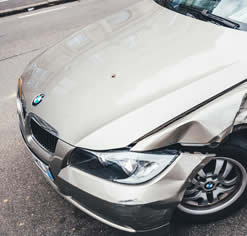 Car Insurance Premiums Rising?
Car Insurance Premiums Rising?
Car insurance is an essential aspect of vehicle ownership, providing financial protection in case of accidents or unforeseen events. However, many drivers have experienced the frustration of rising insurance premiums. What causes car insurance rates to keep rising? In this article, we will explore some key factors that contribute to increasing car insurance costs.
1. Historical Claims and Driving Record:
One significant factor influencing car insurance rates is your driving history and claims record. If you have a history of accidents or frequent claims, insurers view you as a higher risk, leading to increased premiums. Moving violations and speeding tickets can also raise your rates.
2. Age and Experience:
Younger drivers typically face higher premiums due to their lack of experience behind the wheel. Statistics show that new drivers are more likely to be involved in accidents, leading insurers to charge higher rates until they accumulate more driving experience and establish a safer track record.
3. Vehicle Type:
– Repair Costs: The make, model, and year of your car play a role in determining your premiums since repairs for luxury or high-end vehicles are generally more expensive.
– Safety Features: Vehicles with advanced safety features like anti-lock brakes, airbags, collision warning systems may qualify for lower premiums as they are deemed safer on the road.
4. Coverage Level:
– Your coverage needs also impact the cost of insurance. Opting for higher coverage limits or additional types of coverage (such as comprehensive or collision) will increase your premium.
5. Location:
– Urban Areas: Living in densely populated urban areas with heavy traffic increases the likelihood of accidents or thefts—resulting in higher premiums.
– Crime Rates: High crime areas with a greater risk for vehicle thefts may incur elevated insurance costs.
6.Driver’s Credit Score:
Some insurers take into account credit scores when calculating car insurance rates as studies suggest a correlation between lower credit scores and increased likelihood of filing claims.
7. Annual Mileage:
– The more you drive, the higher the chance of being involved in an accident. If your annual mileage is high, insurers may charge higher premiums.
8. Claims Frequency:
– Insurance companies also consider the number of claims filed by policyholders in a particular geographical area when assessing premium rates.
– Frequent claims in an area can lead to increased premiums for all policyholders within that vicinity.
9. Inflation and Cost of Vehicle Repairs:
Over time, rising inflation affects not just everyday expenses but also vehicle repair costs. As repair costs increase, insurers may adjust premiums accordingly.
Conclusion:
Multiple factors contribute to increasing car insurance rates, including driving history, age and experience, vehicle type, coverage level requirements, location-based risks such as crime rate or urban traffic density), credit score influences on risk assessment and annual mileage estimates. Understanding these factors empowers drivers to make informed decisions when purchasing car insurance and take necessary steps to decrease their premium costs where possible—maintaining a clean driving record, opting for vehicles with safety features or choosing higher deductibles and self-monitoring driving habits contributing positively towards maintaining affordable coverage options while ensuring financial protection on the road.


